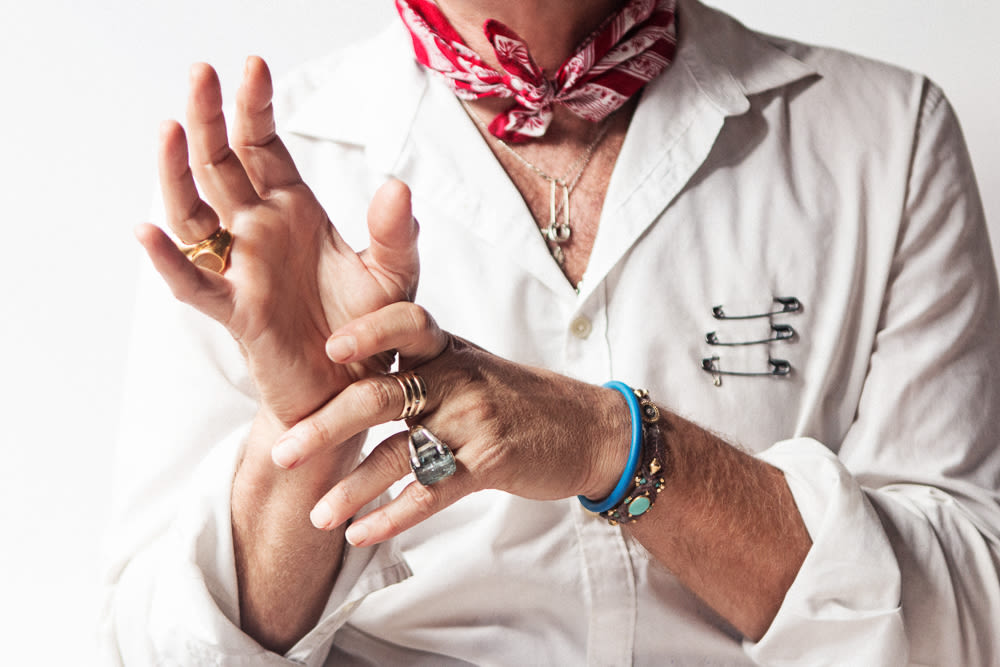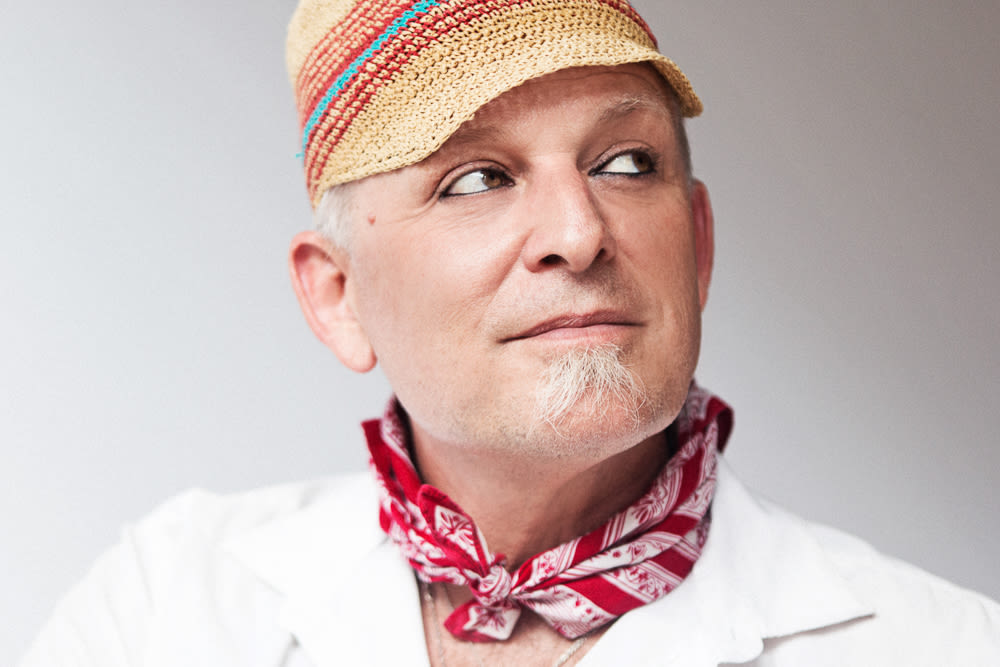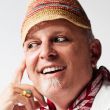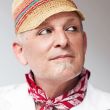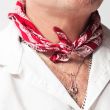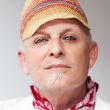'I was the kid in high school that was supposed to graduate in ’75, but I left in ’74. I was like, ‘I can take a test and get out of here?’ I worked for three years as a teenager at this Chinese restaurant in San Francisco—where I’m from—so I could afford to move to Europe for a year when I got out of high school. I was definitely an edgy kid. I had started modeling for a lot of local designers…I became part of Johnny Casablancas’ management and started doing things I wanted to do at that time. In the '70s I wanted to be in Interview and that kind of thing.
I was talked into beauty school. When I grew up it was like a stigma—you only went to beauty school if you were a drop out, basically. Initially, I was approached by the heads of the Vidal Sassoon Academy in San Francisco and they wanted to cut my hair. I was a platinum blond at the time, and I was like, ‘I don’t want a Vidal Sassoon haircut, please.’ Eventually, it was those people who turned around and said, ‘We think you’d make a great hairdresser. Would you be open?’ They just felt it about me. One of them in particular singled me out, and at that time he had a product line and salon open in San Francisco called Paul Brown, and I worked there for a period of time. We were doing all the wealthiest women, all the old families. I worked there until 1980 and then moved to New York.
That was a very interesting time to be in New York…the term Soho didn’t exist, for one—it was all warehouses and artists. It was Williamsburg before Williamsburg was Williamsburg. It was an adventure and a frontier and it was fabulous and it fit my sort of rainbow punk lifestyle. They taught me language and a technique that could apply to anything—reinterpreting and breaking rules, just doing what we were inspired to do. There was this revolutionary salon opening in Soho at the time, and I went down and applied and got hired, and I worked there for six years—it was called John Dellaria. There was this one day…a woman came in and I got her ready, blew her out, all that. She really liked it and said, ‘Do you ever do hairdos?’ I said, ‘I’d love to, but no one’s ever asked me!’ She said she was in a band—she said, ‘Well, we’re called the B-52’s.’ I was like, 'OK! You’ve got the right guy.' So that’s where that started, all that big '80s hair. I was also doing drag hair. Nobody else was using wigs or adding to hair, nobody else was creating those kinds of illusions, and I started to really excel at it, and I had a lot of fun doing it.
At the end of my time at John Dellaria, a gentleman came and starting working there, named Oribe. He said, why don’t you do photoshoots? Why aren’t you out there? I was like, no, no, I want to do other things. This was also right before the supermodel era happened and everything changed. I started tagging along with him…he sent me out on jobs he couldn’t do. My first jobs were with Meisel and Steven Klein. Then Oribe wanted to open a salon. So we started his series of workshops—the original one was in Parachute in Soho. We were just a touring force of kids that all the beauty editors were talking about, what we were using, how we achieved these new looks. Products became celebrities, tools became a celebrities…We started using things like Mason Pearson, velcro rollers…nobody knew who Kiehl’s was and we used Kiehl’s Silk Groom and their Volume Spray. It had not become what it became. I really credit Oribe’s focus and the team’s effort on 'celebritizing' that and making it happen.
The supermodel thing ebbed and flowed, and when they switched to doing celebrities instead, I was a little progressive. The agency said 'Don’t do it!' and I said, I’m sorry, I see this change coming. It’s not going to be models on the cover anymore, it’s going to be celebrities. That was before it happened. I understand their resistance. Separate from my agent, I delved into Hollywood. Ellen von Unwerth liked working out there, and I moved towards more music opportunities too. I worked with Whitney, Mariah, Lady Gaga. I’m most associated with Gwen Stefani. We’ve been together for 19 years. That’s a lot of hairdos. I did make a list of women whose hair I wanted to do and there’s only two I didn’t. Both were very loyal to their hairdressers, Jackie Onassis and Elizabeth Taylor. I honor that so much. If you look at history, from Cleopatra on up, they all had hairdressers. We do a lot more than your hair. We’re allowed intimacy, we’re not your lover, your mother or father, we’re not the doctor…but we’re close. It’s quite spiritual.
As we're moving forward, there’s this convenience of beauty and its abilities to achieve and realize whatever you really want from your hair. We’ve educated people so much and there are so many things out there, but there is a great momentum. You used to be considered nutty if you changed your hairdo and now you can have five hairdos a week, five a day. It’s generated this big movement towards education, playfulness…and look at where we are now, even your grandmother has colored hair. Everyone’s pierced and tattooed. I see it getting more focused. I do think we’re going to have some big breakthroughs. Right now at this moment in my career, it’s really just about enjoying life. I’m vital. Work is enjoyable but it is work. You know, it’s like, get a life. Do something. Bake a cake, whatever. I’m very simple that way.”
—as told to ITG
Danilo photographed by Tom Newton. Follow him on Twitter here.
Didier talks developing a style of work, James Pecis cuts hair like a kid and Christiaan gets kicked out of Bergdorf Goodman in The Professional.
